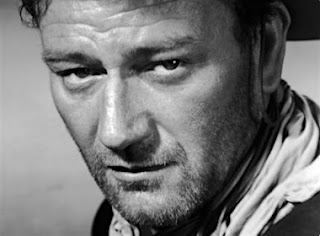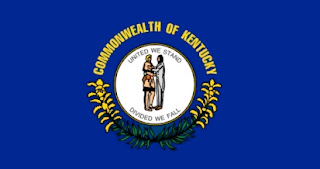Harriet, Martin and John:
America rethinks its iconography
By the time Marion Robert Morrison had morphed into John Wayne, the rules for joining the honor roll of American cultural iconography were pretty much established, if not set in stone. (1) It helped immeasurably if you were white; (2) it helped even more if you were a white male. Presidents were automatically admitted, some more quickly than others. Selected actors, esteemed scientists, brilliant generals and notable writers also got past the velvet rope, if in accordance with (1) and (2).
Generally speaking, though, women and people of color need not have applied.
There’s evidence that that’s starting to change, with a shift in the national symbolism that’s not so much socially profound as it is socially inescapable. The ongoing evolution of the national demographics; a wider bandwidth for symbols of American change, and a corresponding intolerance for our more corrosive legacies have led to this nation finally taking a hard look at who its collective heroes are, and who they’ve almost never been.
◊ ◊ ◊
On Friday, the California State Assembly rejected (36-19) a resolution to commemorate Wayne’s birthday — May 26 — as John Wayne Day throughout the Golden State. The resolution was rejected due to what were described as Wayne’s “disturbing views on race.”
The resolution was introduced by Matthew Harper, a Republican State Assemblyman from Huntington Beach, who advanced the proposal after a similar one in Texas was approved last year. The opposition in California didn’t shrink from the Duke’s long shadow.
Assemblyman Luis Alejo and Assemblywoman Lorena Gonzalez were two of the sharpest critics of the resolution, using Wayne’s own words against him. Alejo quoted from a 1971 interview Wayne had with Playboy magazine.
"I believe in white supremacy until the blacks are educated to a point of responsibility,” Wayne said. “I don't believe in giving authority and positions of leadership and judgment to irresponsible people."
Remember, this was 1971, long after Jackie Robinson and Ralph Bunche, Thurgood Marshall and the Rev. Martin Luther King had become highly admirable fixtures of the national self-image. Among others.
◊ ◊ ◊
GONZALEZ, READING from the same interview, mentions how Wayne defended the systematic takeover of land from Native Americans. "Our so-called stealing of this country from them was just a matter of survival,” Wayne told Playboy. “There were great numbers of people who needed new land, and the Indians were selfishly trying to keep it for themselves."
Also mentioned were Wayne’s support for the virulent, divisive House Un-American Activities Committee and the extreme-right John Birch Society.
After the bill, ACR137, went down to defeat, Harper had some parting shots, saying that the proposal died because of “the orthodoxy of political correctness.”
"Opposing the John Wayne Day resolution is like opposing apple pie, fireworks, baseball, the Free Enterprise system and the Fourth of July!" Harper said in a statement. Assemblyman Travis Allen agreed, saying that Wayne "stood for those big American values that we know and we love."
Harper represents the district that contains John Wayne Airport, the Orange County airport that was renamed after the Duke died in June 1979, at the age of 72.
◊ ◊ ◊
Some institutions have developed a thicker hide about making immediate amends for ennobling a racist antecedent; they’re more open to insisting that bygones be bygones, what matters is now ... and anyway, there’s all that stationery with the old name printed on it, they can’t just throw that away.
On April 4, Princeton University’s board of trustees announced that former President Woodrow Wilson’s name will stay attached to Princeton’s School of Public and International Affairs, in spite of calls to change it because of Wilson’s segregationist leanings when he was president of the institution.
Yale University similarly pushed back against calls to change the name of its residential Calhoun College, named for the quasi-hysteric former senator and slaveholder John Calhoun, “Removing Calhoun’s name obscures the legacy of slavery rather than addressing it,” Yale President Peter Salovey wrote in an email blast.
The AP reported in March on just how insidiously nasty pushing against social change can get in America. “Backlash against a plan to remove prominent Confederate monuments in New Orleans has been tinged by death threats, intimidation and even what may have been the intentional torching of a contractor's Lamborghini.
“For now, at least, things have gotten so nasty the city hasn't found a contractor willing to bear the risk of tearing down the monuments,” The AP reported. “The city doesn't have its own equipment to move them and is now in talks to find a company, even discussing doing the work at night to avoid further tumult.”
◊ ◊ ◊
SOMETIMES, redressing past ills is less about enrolling an historical figure in the American elite than it is about rescuing said figure from generations of layered assumptions. It’s about trying to put an historical phantom into context.
Nate Parker’s film, “Birth of a Nation,” blew up the 2016 Sundance Film Festival. Moviegoers were in tears watching Parker’s account of the August 1831 Virginia slave rebellion led by Nat Turner, a revolt in which Turner and his band killed at least 50 white people. Rights to the film were acquired for $17.5 million by Fox Searchlight Pictures.
The film will be released theatrically in October, intact with its title, which Parker was proud to repurpose from the 1915 film by movie legend D.W. Griffith.
"Griffith's film relied heavily on racist propaganda to evoke fear and desperation as a tool to solidify white supremacy as the lifeblood of American sustenance,” Parker told Filmmaker in January. “Not only did this film motivate the massive resurgence of the terror group the Ku Klux Klan and the carnage exacted against people of African descent, it served as the foundation of the film industry we know today.
“I've reclaimed this title and re-purposed it as a tool to challenge racism and white supremacy in America, to inspire a riotous disposition toward any and all injustice in this country (and abroad) and to promote the kind of honest confrontation that will galvanize our society toward healing and sustained systemic change."
◊ ◊ ◊
The elevation of Nat Turner to at least a wider level of national curiosity has been preceded by a gradual shift in how other historical figures in the South have been regarded. The evil of slavery that provoked Turner’s actions had its champions, and those regional Confederate icons, reified in concrete and stone, have been humbled and questioned at an unprecedented rate.
In Louisiana: In December, the New Orleans City Council voted to remove four monuments to the Confederacy from various high-visibility locations, including near the New Orleans Museum of Art. With the 6-1 vote officials will dismantle statues of Gens. Robert E. Lee, P.G.T. Beauregard and Jefferson Davis, President of the Confederacy; and an obelisk dedicated to the Battle of Liberty Place.
Mayor Mitch Landrieu told CNN the move was a "courageous decision to turn a page on our divisive past and chart the course for a more inclusive future."
“It is patently clear that the intention of putting these statues up was to lord over and oppress African-Americans, and this is a symbol in this city of the continued oppression of black people,” activist Malcolm Suber said in August to the New Orleans Advocate.
◊ ◊ ◊
IN KENTUCKY: On Friday, James Ramsey, president of the University of Louisville, and Louisville Mayor Greg Fischer jointly announced that a Confederate monument topped with a statue of Jefferson Davis, president of the Confederacy, would be removed from a location near the university campus where it’s been since 1895.
The monument honoring Kentucky Confederates who died in the Civil War will be moved to another location, they said during Friday’s announcement. "It's time for us to move this monument to a more appropriate place," Ramsey said according to The Associated Press.
◊ ◊ ◊
In Maryland: A task force for Baltimore Mayor Stephanie Rawlings-Blake recommended in January that two monuments honoring Confederate-era leaders should be moved out of the city's public parks, The Baltimore Sun reported.
Gibson called Taney's authorship of the infamous Dred Scott decision, holding that black people couldn’t be citizens, to be "pure racism."
"In my view,” Gibson told The Sun, ”he deserves a place in infamy."
◊ ◊ ◊
In South Carolina: the state General Assembly voted last July to remove the Confederate flag from the Statehouse grounds, and Gov. Nikki Haley signed the bill authorizing its removal.
In a solemn ceremony, a highway patrol honor guard removed the flag from the grounds, where it’s flown since 1961. “No one should drive by the statehouse and feel pain,” Haley said on NBC. “No one should drive by the statehouse and feel like they don’t belong.”
At Disney World (Disney World!): In July, The Epcot Center removed a Confederate banner from its American Adventure stage show, described by the resort as “a 30-minute stage show chronicling our illustrious past and boundless future through Audio-Animatronics, film and music.”
◊ ◊ ◊
THESE MONUMENTS to the past have either come down or come under fire, not long after one monument was erected to honor one of the better angels of our nature. Its scale and grandeur prove that the national iconography can be an equal opportunity employer.
In August 2011, a stirring monument of Martin Luther King was opened in West Potomac Park in Washington, near the National Mall, after 20 years of effort. It’s not the first memorial to African Americans in the nation’s capital, but with its imposing white granite, and its size, it may well be the most powerful.
That outsize tribute to a great American preceded another tribute still in the planning stages: a darker American face where it really registers, on the currency in your wallet.
◊ ◊ ◊
Treasury Secretary Jacob Lew’s April 20 announcement that Harriet Tubman, engineer of the Underground Railroad, nurse and Union spy during the Civil War, would be the new face on the $20 bill was met with passionate praise and vein-popping scorn — reactions that fell predictably along political lines.
On the front of the bill, the face of Tubman will replace that of Andrew Jackson, president, balancer of the national budget, savior of New Orleans, slaveholder and, as the architect of the Trail of Tears, unapologetic champion of the forced relocation and wholesale eradication of Native Americans. Jackson moves to the back of the bill.
In another change, the back of the $10 bill will feature Lucretia Mott, Sojourner Truth, Susan B. Anthony, Elizabeth Cady Stanton and Alice Paul.
The New York Times said Lew’s money changes “may well have captured a historical moment for a multicultural, multiethnic and multiracial nation moving contentiously through the early years of a new century.”
It’s not a done deal yet; Lew told The Times he hoped that successors to the Obama administration wouldn’t veto Lew’s plans. “I don’t think somebody’s going to probably want to do that — to take the image of Harriet Tubman off of our money? To take the image of the suffragists off?” he said.
◊ ◊ ◊
A BIFURCATED Congress could still screw this up, but still. It’s obvious where we’re going with all of this. Viewing these various events in isolation, they seem to fade into a series of sporadic events, circumstance and opportunity and reaction. They’re really anything but.
Our social history is full of such tectonic events whose scope was hard to grasp immediately. What's happening now isn’t circumstantial; it’s existential. This is how our nation drags itself into the future, incrementally then seemingly all at once, activated by both the shock and the awe of the new, the unlikely, the once-unthinkable, morphing into the everyday.
You watch: The hue and cry over the Tubman $20s will pick up steam, getting more and more hateful and racially disparaging, but it’ll stop the day they go into circulation ... to be followed by a shortage of available bills at the bank, the ATM or anywhere else, as people feverishly hold on to every Tubman they can find. This is how our nation drags itself into the future. This is how we do it.
◊ ◊ ◊
Those whom we revere say more about us than about those whom we revere. Our standing army of citizen saints, the ones historically on everything from the monuments to the money, was due for a serious rotation. People with “those big American values that we know and we love” don’t all look like John Wayne.
And it’s true, some of the national self-identity remains locked in the bitter amber of the antebellum past, its physical form — in obelisks and flags and statuary, on license plates and flying over statehouses, in the intolerant views of an iconic actor — representing the worst that’s been within us, an America we fight to keep in the rear-view mirror.
But that’s where it belongs, in the past. Because that’s not where we’re going. That’s just in the way of where we’re going, and we know it.
Image credits: John Wayne: Unknown (notify if credit is available). Calhoun: Matthew Brady (1849) (Library of Congress). Still from "Birth of a Nation": Fox Searchlight Pictures. Jefferson Davis memorial, New Orleans: CNN. Roger Taney monument: The Baltimore Sun. Detail of MLK monument: BBC News. Tubman $20: Artist unknown (notify if identity is available).












.jpg)
Comments
Post a Comment